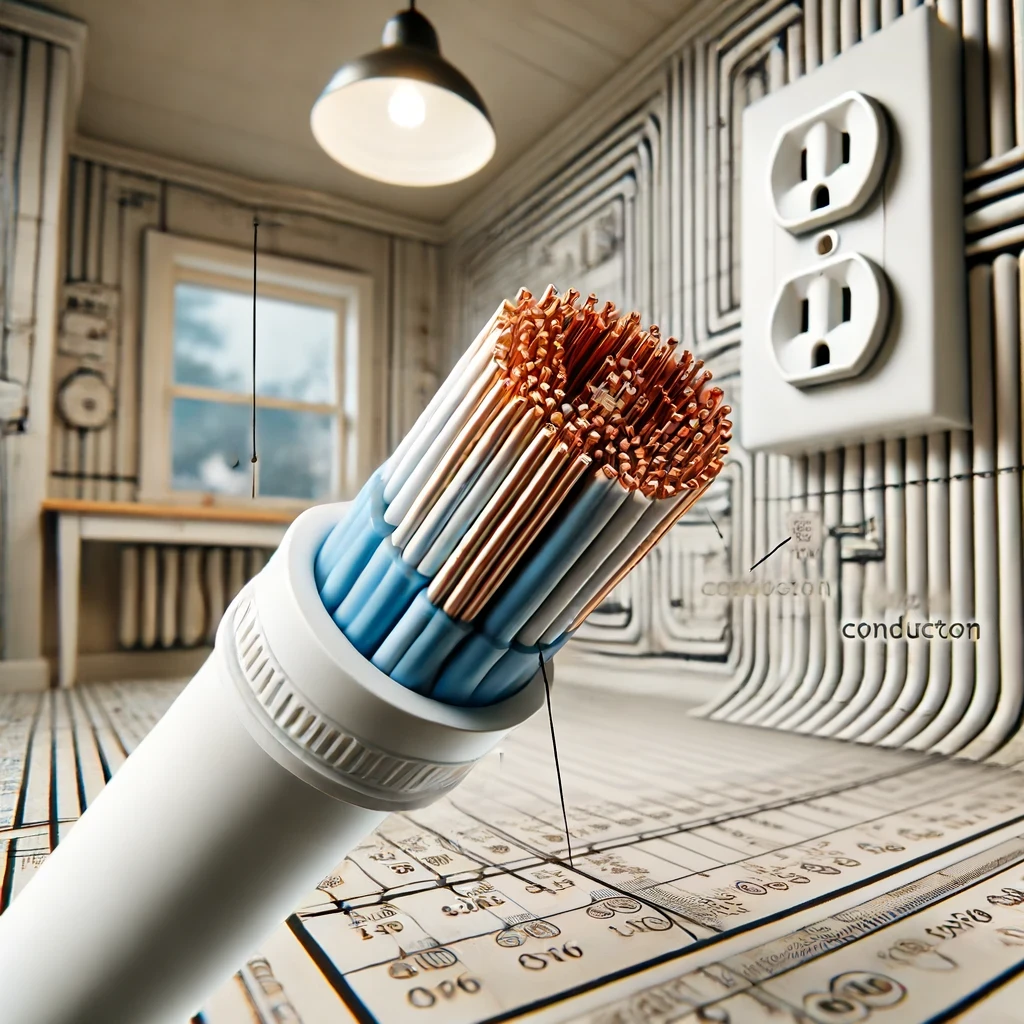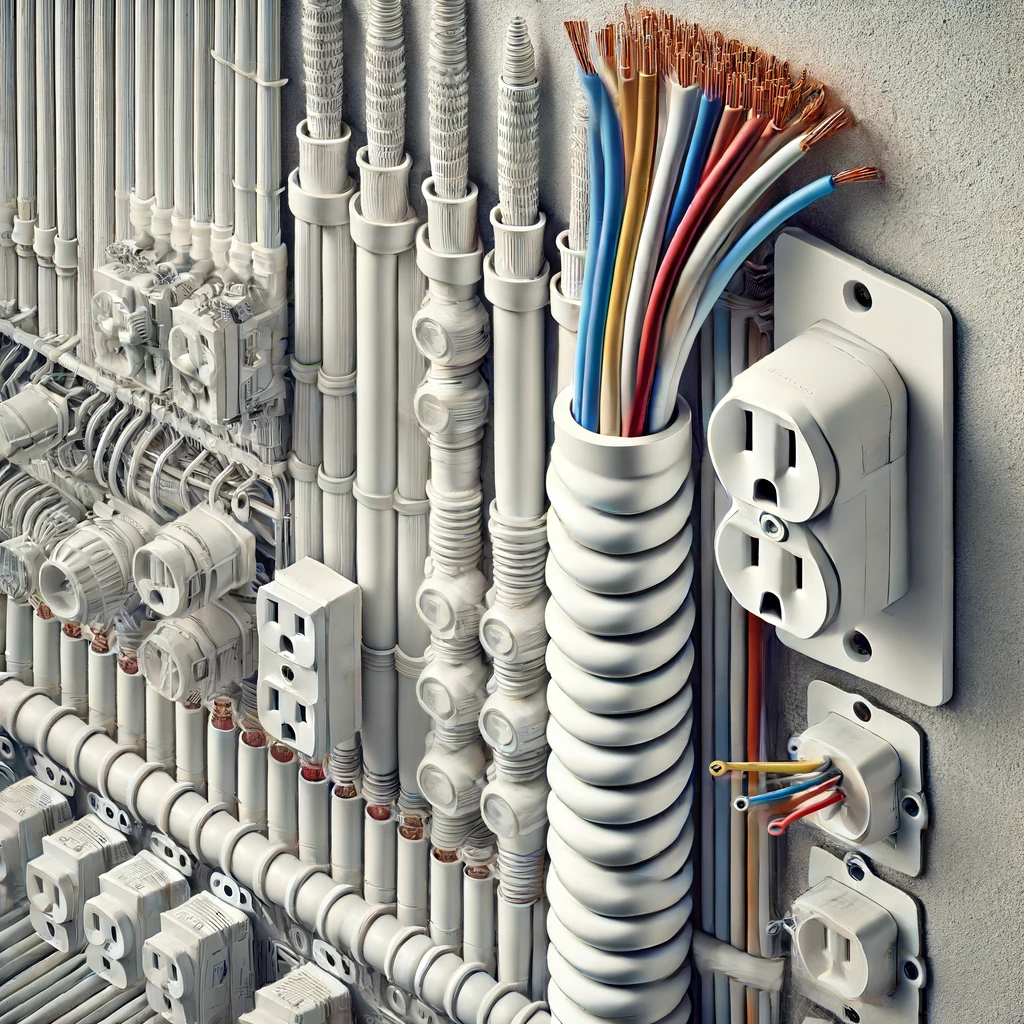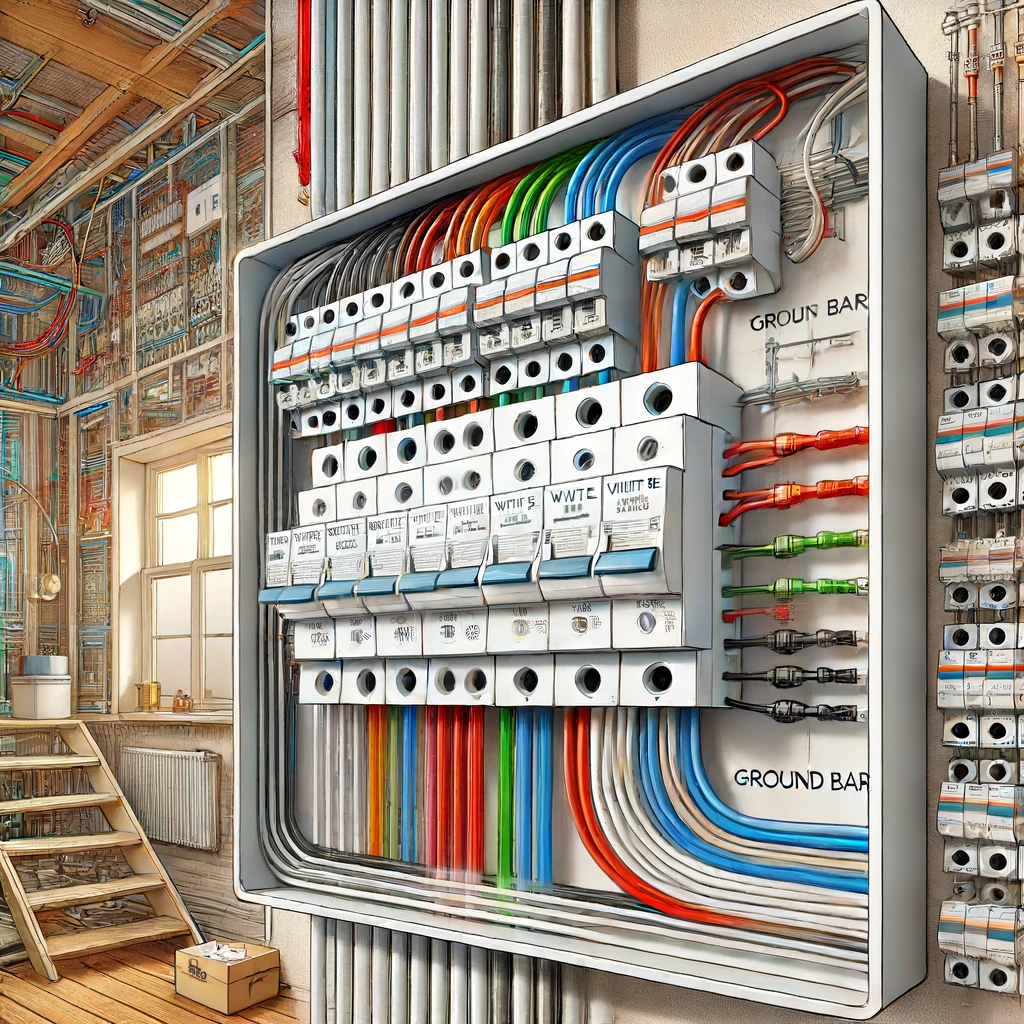Understanding the function and proper handling of the white wire in residential electrical systems is crucial for ensuring both safety and efficiency. This article explores what is the white wire in house wiring, the various aspects of the white wire, including its function, safety considerations, common wiring configurations, troubleshooting and repairs, and adherence to regulations and standards.
What Is the White Wire in House Wiring
The white wire in house wiring serves several important roles that are critical to the proper functioning and safety of electrical systems.
Neutral Wire
In most residential electrical systems, the white wire is the neutral wire. A critical component completes the electrical circuit by providing a return path to the electrical panel. This allows the electric current to flow back after it has powered an appliance or device. The electrical circuit would be incomplete without the neutral wire, and electrical devices wouldn’t function properly.
Electrical Return Path
The white wire ensures that the circuit is completed by offering a path for the electricity to return to its source. This return path is essential for the functioning of any electrical device. When an electrical device is turned on, current flows through the hot wire to the device, performs the required work (such as lighting a bulb or powering a motor), and then returns via the neutral wire. This closed loop allows the electrical system to operate efficiently and safely.

Voltage Balance
The white wire also helps maintain the voltage balance within the electrical system. By providing a stable return path, it ensures that the voltage remains consistent, which is vital for the proper operation of electrical devices and the overall safety of the electrical system. Voltage balance prevents overloading and potential damage to electrical components, ensuring that the system operates within its designed parameters.
Safety Considerations
Proper safety measures must be taken when working with the white wire to prevent electrical hazards and ensure compliance with regulations.
Proper Identification
Proper identification of the white wire is essential. According to the National Electrical Code (NEC), the white wire is designated as the neutral wire. If the white wire is used for any other purpose, it should be marked with tape to indicate its function. This marking helps electricians and homeowners quickly identify the wire’s purpose, reducing the risk of errors and accidents during installation or maintenance.
Circuit Breakers
Always turn off the circuit breakers before handling any wiring to prevent electrical shock or injury. This is a fundamental safety measure when working with any electrical components. Deactivating the circuit ensures that no current is flowing through the wires, making it safe to handle them. Never assume a wire is safe to touch until the circuit is confirmed to be deactivated.
Code Compliance
Adhering to the NEC standards for safe wiring practices is crucial. These codes ensure that electrical systems are installed and maintained safely, reducing the risk of electrical hazards. The NEC provides detailed guidelines on wire sizing, connections, and installation practices that must be followed to ensure safety and reliability in electrical installations.
Insulation Check
Regularly check the insulation of the white wire for any signs of wear and tear. Damaged insulation can lead to short circuits and electrical fires, posing significant safety risks. Inspecting the insulation helps identify potential issues early, allowing for repairs or replacements before serious problems occur. Ensure that insulation is intact and free from cracks, cuts, or abrasions.
Common Wiring Configurations
Understanding common wiring configurations helps ensure correct installation and maintenance of electrical systems.
Standard Outlet
In standard outlet configurations, the white wire connects to the neutral terminal, which is usually marked with a silver or light-colored screw. This ensures the proper functioning of the outlet by completing the circuit. The neutral terminal provides a return path for the current, allowing devices plugged into the outlet to operate safely and effectively.

Switches
In some switch configurations, the white wire can be used as a hot wire. When this is the case, it should be appropriately marked to indicate its function and prevent confusion during installation or maintenance. This marking is typically done with colored tape or paint. Using a white wire as a hot wire without proper identification can lead to dangerous situations, as it may be mistaken for a neutral wire during future work.
Lighting Fixtures
For lighting fixtures, the white wire typically connects to the neutral wire of the fixture. This connection is essential for the fixture to operate correctly and safely. The neutral wire completes the circuit, allowing the current to flow through the light bulb or other components, illuminating the fixture. Properly connecting the neutral wire ensures that the lighting system functions as intended and reduces the risk of electrical issues.
Troubleshooting and Repairs
Proper troubleshooting and repair techniques are essential for maintaining a safe and efficient electrical system.
Continuity Testing
Use a multimeter to check for continuity in the white wire. This test ensures that the wire is not broken and that the circuit is complete. Continuity testing involves measuring the resistance of the wire; a continuous wire will show low resistance, indicating a complete path for current flow. This test helps identify breaks or faults in the wire that could disrupt the circuit.

Loose Connections
Check for and tighten any loose connections that might cause intermittent power issues. Loose connections can lead to arcing and overheating, which are potential fire hazards. Regularly inspecting and tightening connections helps maintain the integrity of the electrical system and prevents issues that could lead to failures or dangerous conditions.
Fault Isolation
Isolate faults by testing the circuit in segments, starting from the breaker panel. This method helps identify and locate the source of any electrical issues efficiently. By testing different segments of the circuit, you can pinpoint where the problem lies, whether it’s a break in the wire, a faulty connection, or a malfunctioning device. This systematic approach ensures accurate diagnosis and effective repairs.
Replace Damaged Wires
Replace any damaged white wires to ensure the circuit functions correctly. Damaged wires can compromise the safety and efficiency of the electrical system. Signs of damage include frayed insulation, visible cuts, or burn marks. Replacing damaged wires restores the integrity of the circuit, preventing potential hazards such as short circuits or electrical fires.
Regulations and Standards
Adhering to regulations and standards ensures safe and compliant electrical installations.
National Electrical Code (NEC)
Follow NEC guidelines for the correct usage of white wires in different circuits. These guidelines are designed to ensure safety and efficiency in electrical installations. The NEC covers all aspects of electrical wiring, including wire types, sizes, and installation methods, providing a comprehensive framework for safe electrical practices.
Local Building Codes
Comply with local building codes, which may have additional requirements beyond the NEC. Local codes address specific safety concerns relevant to the area. These codes may include additional provisions for weather conditions, building materials, and other factors that can impact electrical safety. Ensuring compliance with both national and local codes is essential for safe and legal electrical installations.
Labeling
Ensure all wiring, especially white wires used as hot wires, are properly labeled. Proper labeling helps prevent confusion and ensures safe maintenance and troubleshooting. Labels should clearly indicate the wire’s function and any special considerations, such as being used as a hot wire. Proper labeling is a simple yet effective way to enhance safety and clarity in electrical systems.
Inspections
Regularly inspect electrical systems for compliance with safety standards and regulations. Regular inspections help identify potential issues before they become serious hazards. Inspections should include checking wire connections, insulation condition, and overall system integrity. Conducting regular inspections ensures that the electrical system remains safe, reliable, and compliant with all applicable standards.

